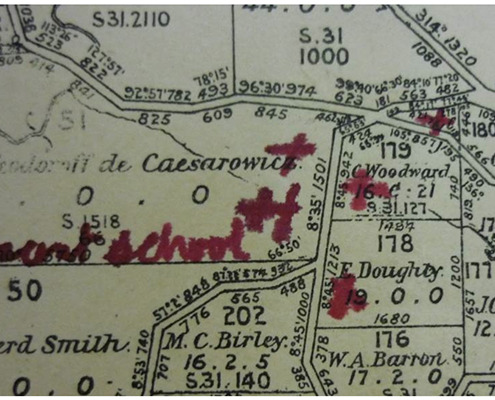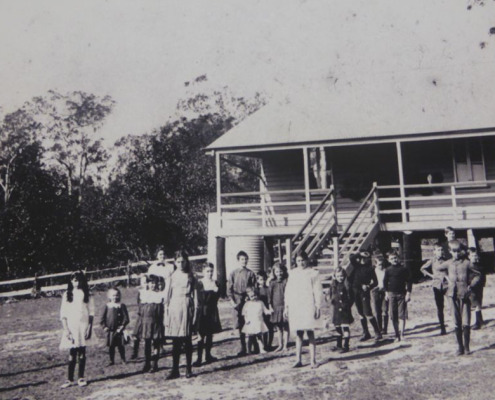Kenmore State School
The first request from residents of Kenmore for a provisional school was made on 22 May 1894. The names of the men on the Building Committee were Richard Woolcock, Albert J Stock (Secretary), Robert Alford, William H Stanley and Mr Nichol.
On 21 June 1894 the secretary wrote again to Government requesting that they be allowed to use the hall as the school. The building was described as 50 feet high; 11’ x 26’ in size and ‘well ventilated and lighted’. This is the same building often referred to as the ‘Old Orange Lodge’. There are 42 children who would attend. However, the Department continued to defer the matter.
The secretary wrote again on 15 October 1894 arguing about the necessity of a school as there are a number of children too young to travel to Brookfield or Indooroopilly schools and are thus receiving no education. He also states that that ‘would be satisfied with an unclassified female teacher.’
The Provisional School for Kenmore was not approved by the Education Department until June 1900. The list of parents, number and age of children to support the application is dated April 1900. In 1900 the school committee comprised William Stanley as Chairman, Robert Alford as Secretary, William Squire as Treasurer and William Penhaligon and Alfred Ayes as members.
The provisional school continued to be located in the hall, for which an annual rent of £5 was paid. The teacher, Elizabeth Carver travelled to Indooroopilly by train where she was picked up daily by one of the parents.
The conditions for a Provisional School were that the parents had to contribute the actual building, but on land vested in the Education Department. The secretary wrote in 1901, asking the estimated cost of a school building, the answer being that ‘it would not exceed £100’.
There was considerable debate for several years on the land to be purchased on which to build a school. At first the preferred option of the local people was land owned by Messrs Penhaligon and Moore. (Portion 179) A Departmental inspector visited on several occasions, submitting reports showing the various options. The Education Department recommended Portion 178 owned by Mr Doughty.
Eventually it was decided to purchase the Penhaligon/Moore two acres at £30 per acre. The committee’s share was one fifth.
Tenders for the new school building were called in March 1905, after a collection from residents had been made.
As noted, the first teacher was Elizabeth Carver. The file does not state when she left but Richard Gibbins was the teacher by mid 1902. There was an incident of severe punishment of a girl which resulted in Mr Gibbins being warned by the Department that “he must govern the school without harshness and he was to guard against severity.” In August 1902 the committee advised the Department that all parents were going to remove their children from the school unless there was a change of teacher.
By 1904 the teacher was Gertrude Lane. In 1916 Bessie Palmer was in charge; and by 1930 Thomas Laws was the head teacher and remained there for several decades. Kenmore was essentially a one-teacher school but others were employed for specific skills. For example, Phyllis Butler was employed in 1916 as a needlework teacher on £20 a year.
Enrolments at the one-teacher school from 1900 to 1955 averaged 30 children a year. In 1960 there were 101 children and by 1970 the numbers had jumped to 737. This was a whole new era for the suburb of Kenmore and the school.
References
QSA Series 12607, Item 15068 – Kenmore State School 1894-1944




